A National Geographic photographer gave me 4 tips for taking better pictures with my phone. I tried them and the results blew me away.
Joey Hadden

- National Geographic photographer Kiliii Yüyan shared his best tips for phone photography.
- To take better pictures on your phone, Yüyan suggests getting closer and trying new angles.
I've been taking photos on film and digital cameras for nearly a decade. But now that I travel more than ever before, I thought it was time to learn about my smallest, most nimble camera — my phone.
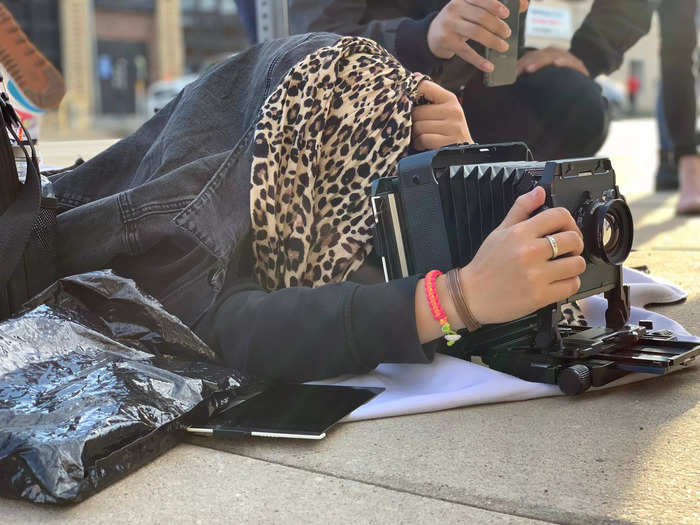
I went to school for photography, which made me great with cameras, from digital to film. But I rarely took pictures on my phone until I graduated and started traveling more.
Now that I'm a travel reporter, I take four trips a year where my work revolves around documenting the places I'm visiting, and I often rely on my phone for some of that imagery.
To improve my phone photography skills, I recently talked to a National Geographic photographer about how to take mobile phone pictures that truly stand out.

And just like when I was in school, I wanted to learn from a pro.
I turned to Kiliii Yüyan, a National Geographic photographer who tells stories about how different cultures relate to the environment, from the Amazon to the Arctic seas.
Yüyan's first work was published by the magazine in 2018 and showcased whale hunters in Alaska, he told Insider.
More recently, National Geographic granted Yüyan the 2023 Eliza Scidmore Award for Outstanding Storytelling for his portfolio showcasing humans and their environments, which includes his 2022 July cover shot for a story documenting the lives of Native Americans. This cover was also featured in the magazine's 2022 Pictures of the Year issue.
Yüyan told Insider that nowadays, people are "drowning in photographs," but there are ways to make yours stand out — even if you're just shooting on your phone.
Once I put his tips to use, I saw what a big difference they made in making my photos feel more powerful.
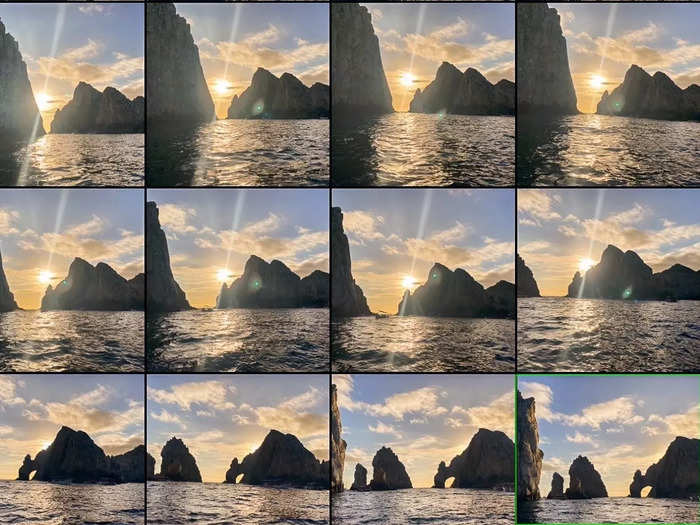
When Yüyan and I chatted about taking stand-out photos on a phone, he mentioned uncommon angles, proximity to the subject, interesting foregrounds, and time spent shooting.
Here are his best tips for creating powerful pictures with a phone, and examples of their success from my own camera roll.
For the best lighting, backgrounds, and immersive shots, Yüyan told me to take my time and shoot a lot. He was right.
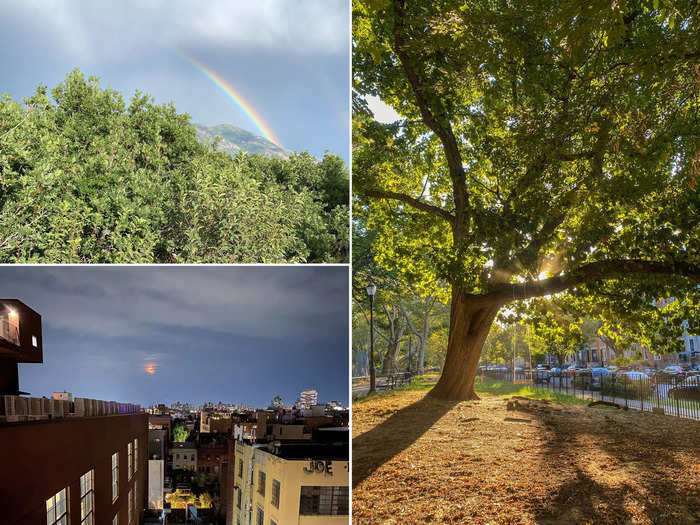
From capturing a rainbow in Salt Lake City to rays of sunlight shining through a tree in my Brooklyn neighborhood, I think staying in one location for long periods of time has served me well while shooting with my phone, just as Yüyan advised me.
"The real secret of professional photographers is we shoot a lot, and then edit it down to just one or two " Yüyan told Insider. "You should do the same with your phone."
According to Yüyan, spending a long time shooting in one location allows you to find optimal lighting, and interesting backdrops, as well as truly immerse yourself in the environment.
In the photos above, spent between one and five hours at each location. This allowed me to make pictures that had light I found to be stunning, including the rainbow, the sun beaming through the tree, and a shot of a red-hued moon dimed behind a cloud on a rooftop in Brooklyn, New York.
"Good photographs come from deep observation, and the muses reward those who slow down, stop running from place to place, and immerse themselves in the specific place and moment," he said.
So stick around in one location, take tons of pictures, and "make room for life to unfold in front of your lens," he added.
Next, Yüyan said to take advantage of how small and lightweight phones are by shooting from angles we don't often see while observing the world, like looking up at your subject from below.

To find the perfect angle, Yüyan said to start by considering the ways shooting with a lightweight, thin object can open up the realm of possibilities.
"It becomes a habit to use the phone at just eye level, but if you watch someone who is good at selfies you can see they are always moving the phone around – up, down and around to try better angles," he said. "The same applies to making any other kind of photo."
I thought this was an important point that I never thought about before, but it left me wondering how to tell which angle makes the strongest shot.
"One good criterion is seeing how much depth an angle will show in a photograph," Yüyan explained.
For example, he said when photographing a child, an angle looking down at the kid will typically come out flat and boring. But shooting from beneath the child's eye level looking up can show the layers of the person and whatever is above them.
"We rarely get down below a child's height to look up at the world, and that perspective can be magical."
Yüyan's example reminded me of how I photograph my small dog when we're outside. When I take pictures of her from above or straight on, I find that I can't get a sense of her expression or personality, which makes the picture look boring to me.
But when I've gotten below her and snapped the picture while aiming up, I can see her explorative nature and the way she uses her environment to feel bigger, like perching on top of a rock on the edge of a creek.
I've also seen how shooting from beneath widely-photographed landmarks makes my pictures stand out more.
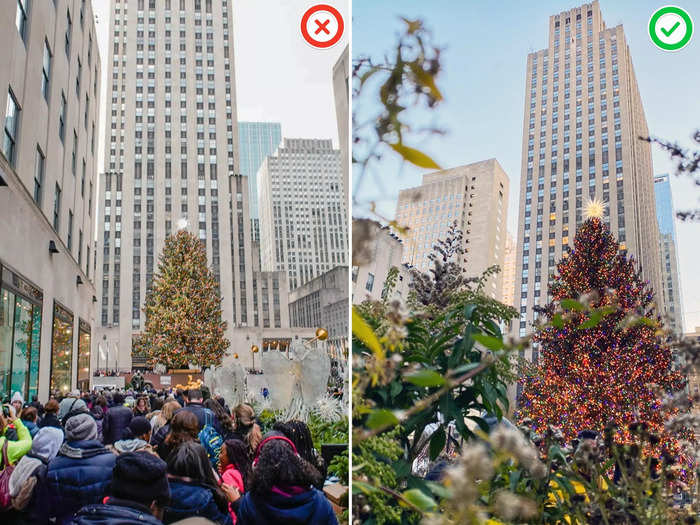
Yüyan's tip of experimenting with angles that add depth reminded me of another subject I've shot on my phone — the iconic Rockefeller Center Christmas tree in NYC.
The first time I photographed the famous tree, I shot from eye level. When I looked at my photo, I thought it looked like any other picture of the famous holiday scene.
But when I returned to try a lower angle beneath some foliage, I thought it made a more unique image. I could now see layers of smaller plants in front of the tree and the tops of the buildings surrounding it, giving me a better idea of its scale, which was previously missing.
Yüyan also told me that I can make photos of epic scenery stand out more by placing something in the foreground.

According to Yüyan, pictures of stunning natural landscapes are challenging to make stand out since they've been photographed so much. His best advice is to find a good foreground subject.
"Great backgrounds, such as mountains or waterfalls, are easy to find because we're always looking for them," Yüyan said. "On the other hand, a good foreground subject, such as blooming wildflowers or a craggy tree, can be much harder to find in the right location."
Yüyan recommends searching for a foreground subject and framing your shot so you can see the scenery in the distance.
"It'll give your images depth, intimacy, and make your photos unique," he added.
His tip reminded me of when I photographed a beach across the street from mountains in Santa Cruz, California. I started by photographing the beach from the shore. I thought the mountains looked nice, but there was so much sand that I thought the bottom half of my image looked boring.
So I took my phone across some ocean rocks and into the tide pools. I thought the rocks and reflecting water spruced up my foreground by giving my image more layers. To me, this made my image feel more dynamic.
In my opinion, including foreground subjects in my nature shots has made them feel more immersive.
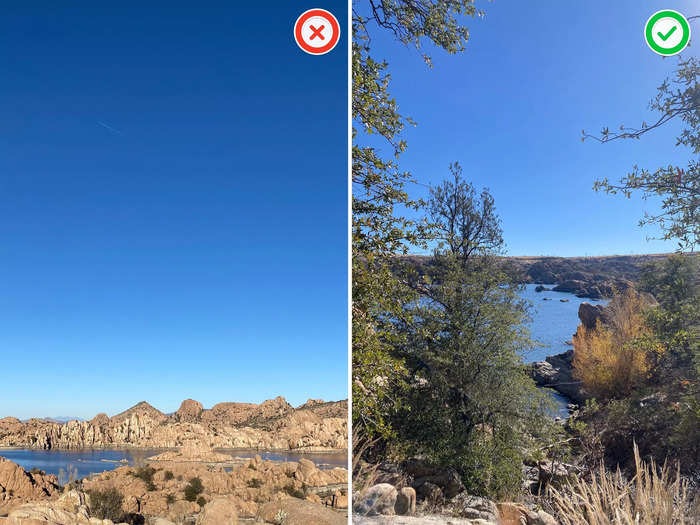
Yüyan's foreground tip reminded me of some photos I also took during a hike in Prescott, Arizona.
When I first arrived at the Watson Lake parking lot for my hike, I thought it looked stunning with rock formations I hadn't seen before. So I was surprised when I found that photographing the scene from the lot didn't seem to do it justice.
But once I immersed myself in the landscape by hiking the trails, I found foreground subjects such as shrubs that better framed the lake scene.
I thought the inclusion of these elements in the second image gave a better sense of what it was really like to be there because it had more layers showing what actually surrounds the lake.
Yüyan's last tip suggests camera phones work best up close.
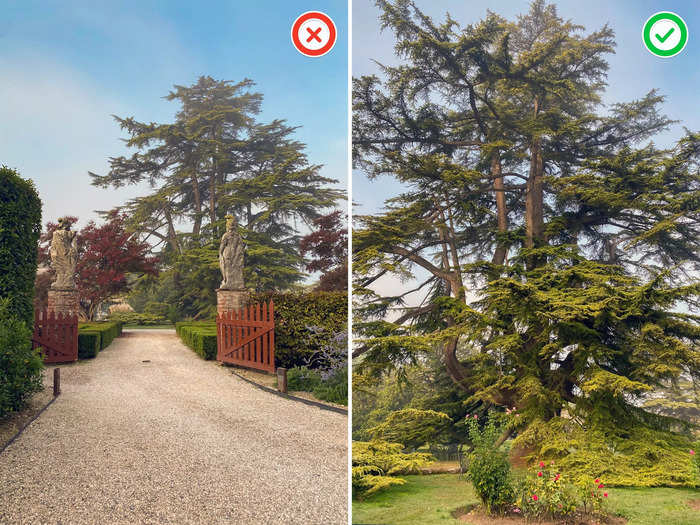
According to Yüyan, making your photos more intimate will often also make them more powerful because the viewer can feel how close you are to your subject.
That's why he suggests that when you're shooting with a phone, you should make it feel like you are standing right next to something for "a more human and intimate feeling."
Rather than using the camera's zoom function, Yüyan suggests walking closer to your subject and "really get in close on what's happening," he said.
This tip reminded me of photographing a 250-year-old Lebanon Cedar tree on the grounds of Castello de Roncade outside of Venice, Italy.
As soon as I saw the tree, I snapped a photo because I found it alluring. But like my shot of Santa Cruz from the shore, I thought the bottom half of my photo was a bland waste of space. And like my shot of Watson Lake from the parking lot in Prescott, Arizona, I didn't find my image nearly as impressive as the real thing.
As I walked closer, I realized that the tree was even more breathtaking up close. In my second photograph, I stood right in front of the tree, where I captured the details of its spewing branches and surrounding greenery.
My goal was to make the photo all about the tree, and I think I accomplished this in my second image because every inch of the frame showed its details, giving the shot more intimacy.
When taking close-up shots on my phone, I also find that the results often show a more intimate view of my experience, like when I bought fresh pasta in Italy.
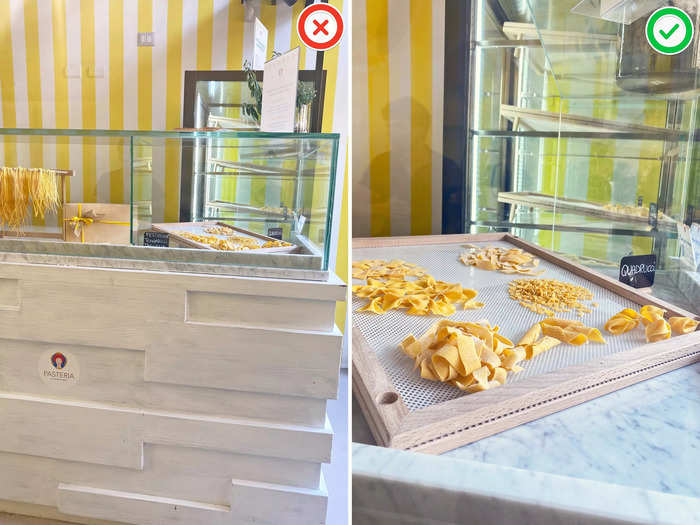
Yüyan's advice to shoot up close with phones also reminded me of another experience I had in Italy.
When I went inside a fresh pasta shop in Vatican City, I was fascinated by the shaped dough on display. Their smooth-looking textures and specs of flour keeping them fresh made me salivate, and I wanted to capture that feeling in a photograph.
But I thought my first photograph of the display case expressed none of this. While I could see a large chunk of the counter, this image was supposed to be about the pasta, and I could hardly capture its texture from this distance.
So for my second image, I got right up next to the glass and snapped a shot of the case with the widest variety of pasta shapes. I lit up as a peeked at the image because it elicited the exact feeling I was hoping for when I made it — a strong craving to taste the pasta, thanks to a front-row view detailing their shapes and textures.
Even as I view the image almost five months later, I have a hankering for pasta every time I look at it.
Yüyan's tips left me feeling inspired, and I can't wait to apply them to my future travels.
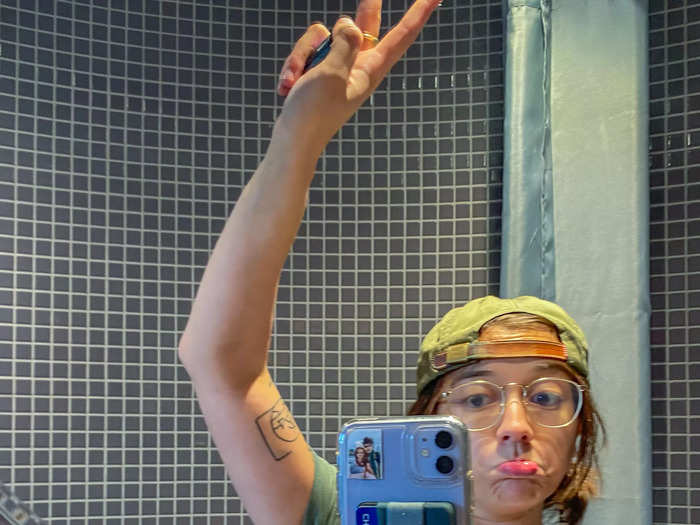
After getting these tips from Yüyan, I was pleased that I thought some images in my camera roll supported them.
Now that I've identified what makes some of these pictures stronger than others, I'll go into my next trip feeling more inspired to shoot from my phone.
Popular Right Now
Popular Keywords
Advertisement